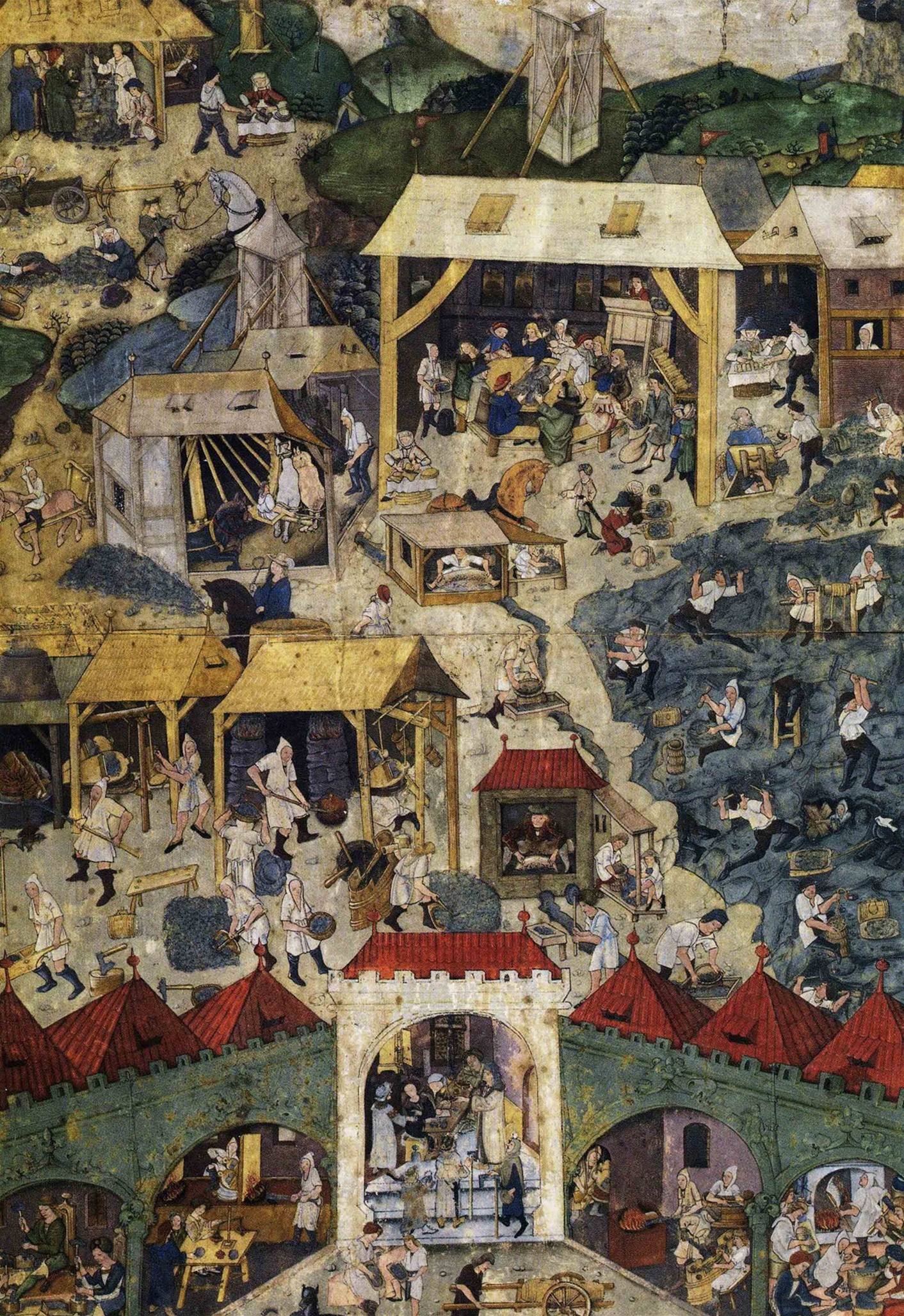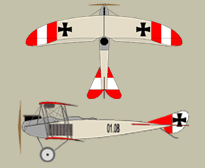|
Heinrich Kostrba
Hauptmann Heinrich (Jindřich) Kostrba was an Austro-Hungarian aviator (of Czech origin), the first which to score three victories in a single day, on 18 February 1916, and three more on 29 June 1916. He went on to amass eight aerial victories and become a squadron leader and flying ace. As World War I ended, Kostrbra helped the Czech independence movement overthrow the Austro-Hungarian government. He became the first commanding officer of the Czechoslovak Air Force. On 24 September 1926, he was killed in a midair collision. Early life and service Heinrich (Jindřich) Kostrba was born in Kutná Hora in 1883. His family was ancient Bohemian minor nobility, the titular surname being Kostrba ze Skalice. Kostrba joined the Austro-Hungarian Army's 73rd Infantry Regiment in 1903. By 1911, he had risen to oberleutnant by May 1911. His early interest in aviation saw him qualify as an aerial observer even before the start of World War I. World War I service Kostrba accompanied Fl ... [...More Info...] [...Related Items...] OR: [Wikipedia] [Google] [Baidu] |
Kutná Hora
Kutná Hora (; medieval Czech: ''Hory Kutné''; german: Kuttenberg) is a town in the Central Bohemian Region of the Czech Republic. It has about 20,000 inhabitants. The centre of Kutná Hora, including the Sedlec Abbey and its ossuary, was designated a UNESCO World Heritage Site in 1995 because of its outstanding architecture and its influence on subsequent architectural developments in other Central European city centres. Since 1961, the town centre is also protected by law as an urban monument reservation, the fourth largest in the country. Administrative parts The town is made up of twelve town parts and villages: *Kutná Hora-Vnitřní Město *Hlouška *Kaňk *Karlov *Malín *Neškaredice *Perštejnec *Poličany *Sedlec *Šipší *Vrchlice *Žižkov Geography Kutná Hora is located about east of Prague. It lies on the Vrchlice stream. The eastern part of the municipal territory lies in a flat agricultural landscape of the Central Elbe Table lowland. The western part lies i ... [...More Info...] [...Related Items...] OR: [Wikipedia] [Google] [Baidu] |
Austro-Hungarian Army
The Austro-Hungarian Army (, literally "Ground Forces of the Austro-Hungarians"; , literally "Imperial and Royal Army") was the ground force of the Austro-Hungarian Dual Monarchy from 1867 to 1918. It was composed of three parts: the joint army (, "Common Army", recruited from all parts of the country), the Imperial Austrian Landwehr (recruited from Cisleithania), and the Royal Hungarian Honvéd (recruited from Transleithania). In the wake of fighting between the Austrian Empire and the Hungarian Kingdom and the two decades of uneasy co-existence following, Hungarian soldiers served either in mixed units or were stationed away from Hungarian areas. With the Austro-Hungarian Compromise of 1867 the new tripartite army was brought into being. It existed until the disestablishment of the Austro-Hungarian Empire following World War I in 1918. The joint "Imperial and Royal Army" ( or ''k.u.k.'') units were generally poorly trained and had very limited access to new equipment bec ... [...More Info...] [...Related Items...] OR: [Wikipedia] [Google] [Baidu] |
1883 Births
Events January–March * January 4 – ''Life'' magazine is founded in Los Angeles, California, United States. * January 10 – A fire at the Newhall Hotel in Milwaukee, Wisconsin, United States, kills 73 people. * January 16 – The Pendleton Civil Service Reform Act, establishing the United States civil service, is passed. * January 19 – The first electric lighting system employing overhead wires begins service in Roselle, New Jersey, United States, installed by Thomas Edison. * February – ''The Adventures of Pinocchio'' by Carlo Collodi is first published complete in book form, in Italy. * February 15 – Tokyo Electrical Lightning Grid, predecessor of Tokyo Electrical Power (TEPCO), one of the largest electrical grids in Asia and the world, is founded in Japan. * February 16 – The '' Ladies' Home Journal'' is published for the first time, in the United States. * February 23 – Alabama becomes the first U.S. stat ... [...More Info...] [...Related Items...] OR: [Wikipedia] [Google] [Baidu] |
Yugoslavia
Yugoslavia (; sh-Latn-Cyrl, separator=" / ", Jugoslavija, Југославија ; sl, Jugoslavija ; mk, Југославија ;; rup, Iugoslavia; hu, Jugoszlávia; rue, label=Pannonian Rusyn, Югославия, translit=Juhoslavija; sk, Juhoslávia; ro, Iugoslavia; cs, Jugoslávie; it, Iugoslavia; tr, Yugoslavya; bg, Югославия, Yugoslaviya ) was a country in Southeast Europe and Central Europe for most of the 20th century. It came into existence after World War I in 1918 under the name of the ''Kingdom of Serbs, Croats and Slovenes'' by the merger of the provisional State of Slovenes, Croats and Serbs (which was formed from territories of the former Austria-Hungary) with the Kingdom of Serbia, and constituted the first union of the South Slavic people as a sovereign state, following centuries in which the region had been part of the Ottoman Empire and Austria-Hungary. Peter I of Serbia was its first sovereign. The kingdom gained international recog ... [...More Info...] [...Related Items...] OR: [Wikipedia] [Google] [Baidu] |
Edvard Beneš
Edvard Beneš (; 28 May 1884 – 3 September 1948) was a Czech politician and statesman who served as the president of Czechoslovakia from 1935 to 1938, and again from 1945 to 1948. He also led the Czechoslovak government-in-exile 1939 to 1945 during World War II. As president, Beneš faced two major crises, which both resulted in his resignation. His first resignation came after the Munich Agreement and subsequent German occupation of Czechoslovakia in 1938, which brought his government into exile in the United Kingdom. The second came about with the 1948 Communist coup, which created the Czechoslovak Socialist Republic. Before his time as president, Beneš was also the first foreign affairs minister (1918–1935) and the fourth prime minister (1921–1922) of Czechoslovakia. A member of the Czech National Social Party, he was known as a skilled diplomat. Early life Birth and family Beneš was born into a peasant family in 1884 in the small town of Kožlany, Kingdom of Bo ... [...More Info...] [...Related Items...] OR: [Wikipedia] [Google] [Baidu] |
Foreign Minister
A foreign affairs minister or minister of foreign affairs (less commonly minister for foreign affairs) is generally a cabinet minister in charge of a state's foreign policy and relations. The formal title of the top official varies between countries. The foreign minister typically reports to the head of government (such as prime minister or president). Difference in titles In some nations, such as India, the foreign minister is referred to as the minister for external affairs; or others, such as Brazil and the states created from the former Soviet Union, call the position the minister of external relations. In the United States, the secretary of state is the member of the Cabinet who handles foreign relations. Other common titles may include minister of foreign relations. In many countries of Latin America, the foreign minister is colloquially called " chancellor" (''canciller'' in the Spanish-speaking countries and ''chanceler'' in the Portuguese-speaking Brazil). Diplomats ... [...More Info...] [...Related Items...] OR: [Wikipedia] [Google] [Baidu] |
Fokker Eindekker
The Fokker ''Eindecker'' fighters were a series of German World War I monoplane single-seat fighter aircraft designed by Netherlands, Dutch engineer Anthony Fokker.Boyne 1988 Developed in April 1915, the first ''Eindecker'' ("Monoplane") was the first purpose-built German fighter aircraft and the first aircraft to be fitted with a synchronization gear, enabling the pilot to fire a machine gun through the arc of the Propeller (aircraft), propeller without striking the blades. The ''Eindecker'' gave the German Army's Air Service Luftstreitkräfte, (then the ''Fliegertruppen des deutschen Kaiserreiches'') a degree of air superiority from July 1915 until early 1916. This period, during which Allied aviators regarded their poorly armed aircraft as "Fokker Fodder", became known as the "Fokker Scourge". Design and development The ''Eindecker'' was based on Fokker's unarmed Fokker M.5K scout (aircraft), scout (military designation Fokker A.III) which in turn was based on the design of th ... [...More Info...] [...Related Items...] OR: [Wikipedia] [Google] [Baidu] |
Hansa-Brandenburg C
Hansa und Brandenburgische Flugzeugwerke (more usually just Hansa-Brandenburg) was a German aircraft manufacturing company that operated during World War I. It was created in May 1914 by the purchase of ''Brandenburgische Flugzeugwerke'' by Camillo Castiglioni, who relocated the factory from Liebau to Brandenburg an der Havel. Brandenburg's chief designer, Ernst Heinkel was retained by the new enterprise. By Autumn 1915, it had become the largest aircraft manufacturer in Germany, with a capital of 1,500,000 Marks, 1,000 employees, and two more factories - one in Rummelsburg, Berlin, and one in Wandsbek, Hamburg. Although manufacturing was carried out in Germany, Castiglioni was an Austrian, and many of the firm's military aircraft were produced for the Austro-Hungarian aviation corps. The firm became especially known for a highly successful series of floatplane fighters and reconnaissance aircraft that were used by the Imperial German Navy during the war. Hansa-Brandenburg did ... [...More Info...] [...Related Items...] OR: [Wikipedia] [Google] [Baidu] |
Battles Of The Isonzo
The Battles of the Isonzo (known as the Isonzo Front by historians, sl, soška fronta) were a series of 12 battles between the Austro-Hungarian and Italian armies in World War I mostly on the territory of present-day Slovenia, and the remainder in Italy along the Isonzo River on the eastern sector of the Italian Front between June 1915 and November 1917. Italian military plans In April 1915, in the secret Treaty of London, Italy was promised by the Allies some of the territories of Austro-Hungarian Empire which were mainly inhabited by ethnic Slovenes and Austrian Germans. Italian commander Luigi Cadorna, a staunch proponent of the frontal assault who claimed the Western Front proved the ineffectiveness of machine guns, initially planned breaking onto the Slovenian plateau, taking Ljubljana and threatening Vienna. The area between the northernmost part of the Adriatic Sea and the sources of the Isonzo River thus became the scene of twelve successive battles. As a result, ... [...More Info...] [...Related Items...] OR: [Wikipedia] [Google] [Baidu] |
Imperial And Royal Aviation Troops
The Austro-Hungarian Aviation Troops or Imperial and Royal Aviation Troops (german: Kaiserliche und Königliche Luftfahrtruppen or , hu, Császári és Királyi Légjárócsapatok) were the air force of the Austro-Hungarian Empire until the empire's demise in 1918; it saw combat on both the Eastern Front and Italian Front during World War I. History The Air Service began in 1893 as a balloon corps () and would later be re-organized in 1912 under the command of Major Emil Uzelac, an army engineering officer. The Air Service would remain under his command until the end of World War I in 1918. The first officers of the air force were private pilots with no military aviation training. At the outbreak of war, the Air Service was composed of 10 observation balloons, 85 pilots and 39 operational aircraft. By the end of 1914, there were 147 operational aircraft deployed in 14 units. Just as Austria-Hungary fielded a joint army and navy, they also had army and naval aviation arm ... [...More Info...] [...Related Items...] OR: [Wikipedia] [Google] [Baidu] |
Aerial Observer
Aerial may refer to: Music * ''Aerial'' (album), by Kate Bush * ''Aerials'' (song), from the album ''Toxicity'' by System of a Down Bands *Aerial (Canadian band) * Aerial (Scottish band) * Aerial (Swedish band) Performance art * Aerial silk, apparatus used in aerial acrobatics *Aerialist, an acrobat who performs in the air Recreation and sport * Aerial (dance move) *Aerial (skateboarding) *Aerial adventure park, ropes course with a recreational purpose * Aerial cartwheel (or side aerial), gymnastics move performed in acro dance and various martial arts *Aerial skiing, discipline of freestyle skiing *Front aerial, gymnastics move performed in acro dance Technology Antennas *Aerial (radio), a radio ''antenna'' or transducer that transmits or receives electromagnetic waves **Aerial (television), an over-the-air television reception antenna Mechanical *Aerial fire apparatus, for firefighting and rescue *Aerial work platform, for positioning workers Optical *Aeri ... [...More Info...] [...Related Items...] OR: [Wikipedia] [Google] [Baidu] |





.jpg)


